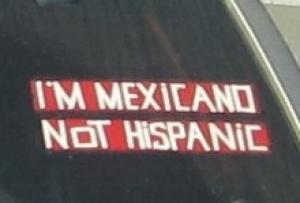
Some first, second, and later generation Latinos in the United States are not identifying ethnically as Latino as they integrate into the fabric of American society, a recent USC Dornsife study found. On the American Community Survey (ACS), which is administered by the U.S. Census Bureau, many people with Latin American ancestry do not identify ethnically as Hispanic.
The study "Non-Hispanics with Latin American ancestry: Assimilation, race, and identity among Latin American descendants in the US" examines why Latinos often do not choose a Latino ethnic identification on U.S. Census surveys.
As the researchers saw, of approximately 44.1 million U.S. residents who declared Hispanic or Latin American ancestry in the survey that year, 2.5 million - or 6 percent - did not check the Hispanic box and thus do not ethnically identify as Spanish/Hispanic/Latino. As a result of some Latinos' propensity to not check the Hispanic race box on the census, a correct analysis of Hispanic achievement and mobility in America is undermined. Data from U.S. Census Bureau surveys are used to make population projections and track the minority groups with the largest and fastest educational growths, and 2.5 million people with Latin American ancestry are left out of these analyses.
In addition, respondents' confusion with the terms ethnicity, ancestry and race often result in inconsistent answers on the U.S. Census surveys, the study found. Oftentimes the lines among these categories are blurred. And as immigrants assimilate, their identities shift.
Their findings suggest that some Latin Americans see themselves as non-Hispanic because a racial identity has become more salient in their daily lives. So they are checking the "white," "black" or "Asian" boxes.
Daily interpersonal interactions, being born in the U.S. and traditional processes of assimilation, such as language assimilation, socioeconomic advancement, and interracial marriage may also lead some people with Latin American ancestry to drop their Latino ethnicity in favor of a singular racial identity.
The researchers added that the pressure multiracial college students can feel to get involved in campus organizations geared toward single races, ethnicities, or ancestries such as African American, Latino, or Pacific Islander groups often complicates the racial identity issue.
Non-Hispanic identification was most common among U.S.-born Latin Americans, respondents with mixed ancestries, those who speak only English, and those who identify on the race question as Black or Asian the study found.
The findings suggest that a significant number of Latino immigrants and their offspring may be thoroughly integrating into American society, but their close identification with other racial groups distorts the data.
Source: PhysOrg.com, “Racial identity is changing among Latinos,” by Ambrosia Viramontes-Brody, December 26, 2011.